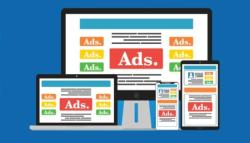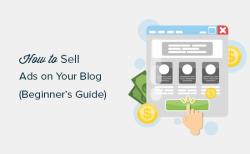Can I put my own ads on my website?
Absolutely, you can put your own ads on your website. This is often referred to as self-serve advertising. It means you are promoting your own products, services, or content on your site, rather than selling ad space to external advertisers.
Here's a general guide on how you can put your own ads on your website:
Create Ad Creatives:
- Design the visual elements of your ad, including images, text, and any other relevant content. Ensure that your ad is visually appealing and effectively communicates your message.
Choose Ad Placements:
- Decide where on your website you want to display the ads. Common locations include banner areas, sidebar sections, or within the content itself.
Implement Ad Code:
- If you're using an ad management system or a content management system (CMS) like WordPress, you may need to embed the ad code into the relevant sections of your website. This could involve adding HTML or JavaScript code.
Test Your Ads:
- Before making your ads live, test them to ensure they display correctly and function as intended. Check different browsers and devices to ensure a consistent user experience.
Monitor Performance:
- Once your ads are live, use analytics tools to monitor their performance. Track metrics such as impressions, click-through rates, and conversions. This data can help you understand how well your ads are resonating with your audience.
Optimize and Update:
- Based on the performance data, consider optimizing your ads. This could involve tweaking the design, changing the messaging, or adjusting the placement for better results.
Rotate Ads:
- If you have multiple products or promotions, consider rotating different ads to keep your content fresh and showcase various offerings.
Comply with Policies:
- Ensure that your ads comply with your website's policies and any relevant legal regulations. Be transparent about the nature of the content you are promoting.
Self-serve advertising allows you full control over the content and messaging on your website. It's a powerful tool for promoting your own products, services, or initiatives to your audience.
Absolutely! Website owners can definitely place their own ads on their websites, offering a more controlled and potentially customizable approach to monetization. Here's a breakdown of the process and considerations:
1. Placing Your Own Ads:
- Develop ad creatives: Design banners, text ads, or native ad formats that promote your own products, services, or affiliate partnerships.
- Implement ad serving technology: Utilize ad management platforms like Google Ad Manager (formerly DoubleClick for Publishers) or free plugins for content management systems to schedule ad rotations, track performance, and manage ad placement.
- Target specific pages or sections: Consider where your ads align with user interest and content relevance, avoiding intrusive placements that disrupt user experience.
- Track and analyze ad performance: Monitor impressions, clicks, and conversions to optimize ad formats, targeting, and placement for better results.
2. Process and Management:
- Define your goals: Are you aiming for direct sales, lead generation, or brand awareness? Understanding your goals will guide your creative development and targeting strategies.
- Budget considerations: Factor in the cost of ad server software, design work for ad creatives, and any fees associated with affiliate programs.
- Data privacy and compliance: Ensure you comply with data privacy regulations like GDPR or CCPA regarding user data collection and ad targeting practices.
- User experience: Prioritize user experience by placing ads seamlessly without compromising website aesthetics or functionality.
- Continuous optimization: Regularly analyze ad performance and adjust your strategies based on insights to improve efficiency and effectiveness.
3. Considerations and Guidelines:
- Ad fatigue: Avoid overcomplicating your website with too many ads, as excessive ad load can deter users and diminish their effectiveness.
- Relevance and transparency: Ensure your ads are relevant to your audience and website content, and be transparent about using self-placed ads.
- Legal disclosures: Disclose any sponsored content or affiliate relationships clearly to comply with advertising regulations.
- Testing and experimentation: A/B test different ad formats, placements, and creatives to identify what resonates best with your audience.
- Ethics and user trust: Maintain ethical advertising practices and avoid misleading or deceptive claims to build user trust and credibility.
Self-placed ads can be a rewarding way to monetize your website if done strategically and transparently. By carefully planning your approach, monitoring performance, and prioritizing user experience, you can leverage this strategy to create a sustainable revenue stream for your website.




